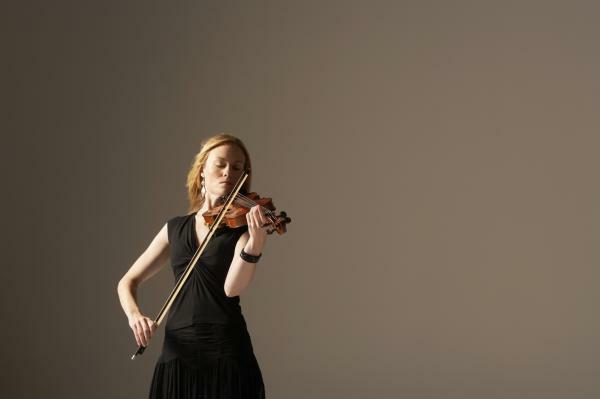
Dyslalia is a specific voice and speech disorder characterized by the presence of errors in the articulation of certain consonant sounds. It should be noted that it is frequently a transient dyslalia. The most common errors presented by people with dyslalia are characterized by the presence of omissions, substitutions or distortions that affect the consonants "r, s, l, k, z, ch" and that also affect the symphons (two consonants in the same syllable).
If you suspect that your child may suffer from dyslalia, this article from Psychology-Online may be very useful: what is dyslalia: definition, causes, types and treatment.
Index
- What is dyslalia
- Causes of dyslalia
- Types of dyslalia
- Treatment of dyslalia
What is dyslalia.
What is dyslalia? Dyslalia is a specific speech difficulty and the voice, specifically, of the production and / or articulation of one or more phonemes. The phonemes that are frequently affected in children with dyslalia are the aforementioned consonants "r, s, l, k, z, ch". It is common for this disorder to condition children's learning, therefore, it is recommended that it be treated early.
Thus, children with dyslalia tend to eliminate, replace and / or distort the sounds of one or more phonemes, so it can sometimes be difficult to understand the word they are saying.
Causes of dyslalia.
What are the causes of dyslalia? This disorder has a multifactorial origin, that is, there are multiple causes of dyslalia:
- Causes organic: alterations in some specific organic function.
- Causes environmental: living in an environment that does not favor the fluency of language and communication.
- Causes psychological: this type of cause occurs when a psychological aspect influences the appearance of dyslalia. Among these causes of dyslalia, we can find affective disorders, effects of family maladjustment, trauma, effects of an overprotective environment, among others.
- Another cause of dyslalia is found in the hereditary factors.
- Lack of auditory comprehension or discrimination: difficulties in differentiating certain sounds.
- Difficulties in perception of space and time, since, consequently, the person will also have problems perceiving the movements necessary to produce a sound.
- Lack or decrease in hearing: correct articulation requires good hearing, therefore, if hearing fails, it makes it difficult to acquisition of language and its development.
Types of dyslalia.
Next, we will classify the different types of dyslalia that exist:
Organic dyslalias
These types of dyslalias are due to organic alterations, which are classified according to the area that is affected or altered. Thus, organic dyslalias include dysglossia, dysarthria, and audiogenic dyslalia.
- Dysglossia it is characterized as a joint disorder due to physical injuries or malformations of the peripheral articulatory organs. These malformations can be genetic or congenital, that is, they are not acquired, but are born with the person.
- Dysarthria is a disorder that occurs as a result of damage to the Central Nervous System and is characterized by a loss of motor control and muscle weakness. This type of organic dyslalia can be due to a brain injury or from the birth of the person. Dysarthria is usually a serious disorder.
- Audiogenic dyslalia it is due to hearing problems. This type of dyslalia is characterized by the existence of difficulties and alterations in the articulation of words.
Evolutionary dyslalias
These types of dyslalias are characterized by an inability to correctly produce phonemes. They tend to be due to cerebral immaturity and an inadequate development of the phonoarticulator device, a device that allows us to emit our voice. These difficulties are common when boys and girls learn to speakTherefore, dyslalia should not be considered until four years of age, since at this age it is considered that people should present a correct articulation of phonemes.
Functional dyslalia
Functional dyslalia refers to alterations in the articulation and pronunciation of certain sounds, that are due to a malfunction of the articulatory organs, but without any cause organic. Functional dyslalia can be caused by an unfavorable environment. The most common and common type of dyslalia is functional dyslalia.

Treatment of dyslalia.
The main goals of dyslalia treatment are for the patient to learn to articulate sounds correctly and to gain greater phonological awareness. Therefore, before starting treatment, it is important to know what type of dyslalia the patient has. The level of articulation that the patient has must also be evaluated, in order to adapt and personalize the treatment of dyslalia to her particular needs.
In order to achieve the fulfillment of these objectives, it is recommended to perform exercises that can promote proper articulation, a fact that involves working on psychomotor skills, so that it enables an improvement in oral and facial agility, auditory distinction, which allows the identification of sounds, the emission of all the joints and a good control of the breathing. In addition, it is also interesting to work on relaxation, in order to be able to eliminate tension and stiffness and to facilitate the articulatory movements of the patient.
Some examples of Helpful exercises for treating dyslalia They are to reproduce movements and oral postures, lip and tongue exercises, differentiate and compare sounds, among others. In order for the patient to be able to distinguish different sounds, it may be helpful for the professional performing the treatment to alternate the correct articulation of the phonemes with the incorrect articulation produced by the patient, until the patient is able to differentiate the sounds.
During the treatment of dyslalia, it is important to note that phonemes should not be corrected that were affected in the patient, but must be taught anew, as if starting from zero. The purpose of treating dyslalia is to teach and / or stimulate the patient's ability to perform the correct postures to produce certain sounds and, at the same time, promote the improvement of the coordination of movements necessary to be able to reproduce those sounds.
This article is merely informative, in Psychology-Online we do not have the power to make a diagnosis or recommend a treatment. We invite you to go to a psychologist to treat your particular case.
If you want to read more articles similar to What is dyslalia: definition, causes, types and treatment, we recommend that you enter our category of Learning disorders.
Bibliography
- Artigas, J., Rigau, E., and García, K. (2008). Language disorders. AEP: Update Protocols, 24, 178-184.
- Hurtado, M.J. (2009). Language disorders. Innovation and educational experiences, 16, 1-11.
- Moreno, R., and Ramírez, M.Á. (2012). The rooms of the dislalia. ReiDoCrea, 1 (5), 38-45.
- Rivera, C. (2009). Intervention with students with dyslalias. Innovation and educational experiences, 14, 1-9.
- Zamora, S.D. (2008). Dyslalia in initial education: strategies for the use of the teacher. University of Azuay.
What is dyslalia: definition, causes, types and treatment


